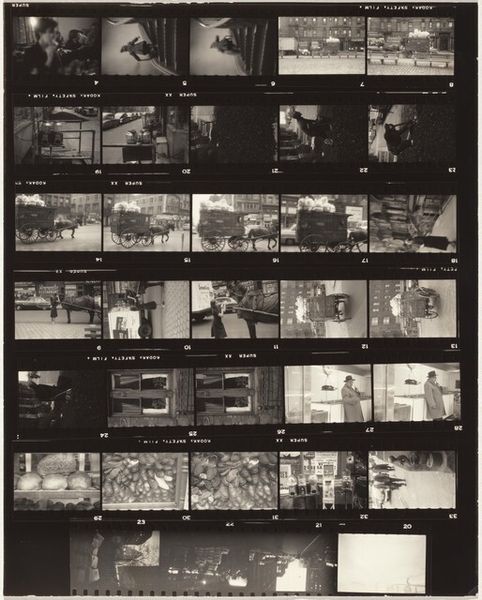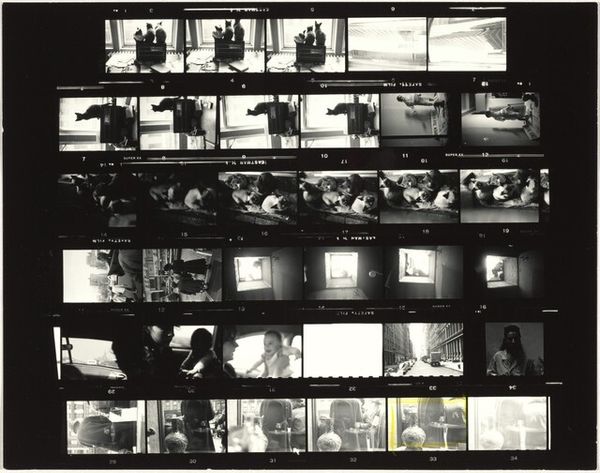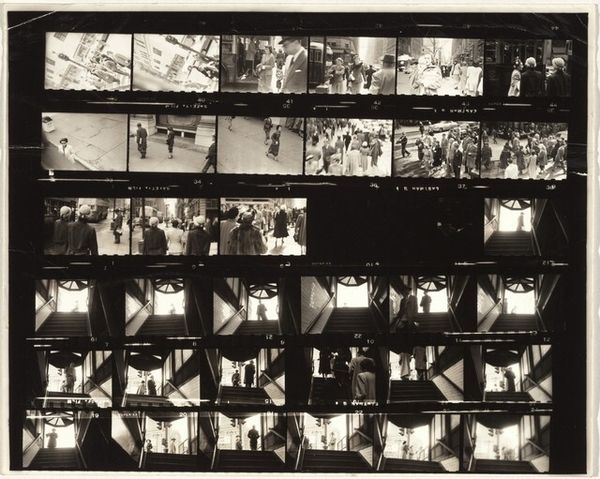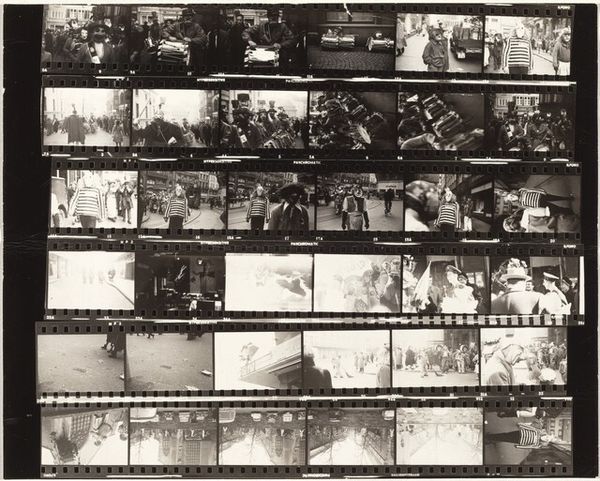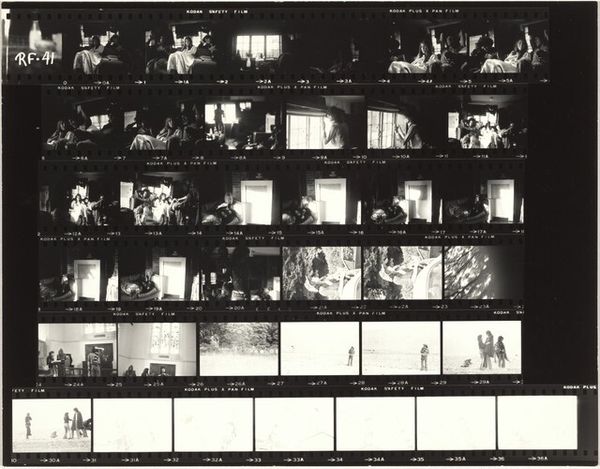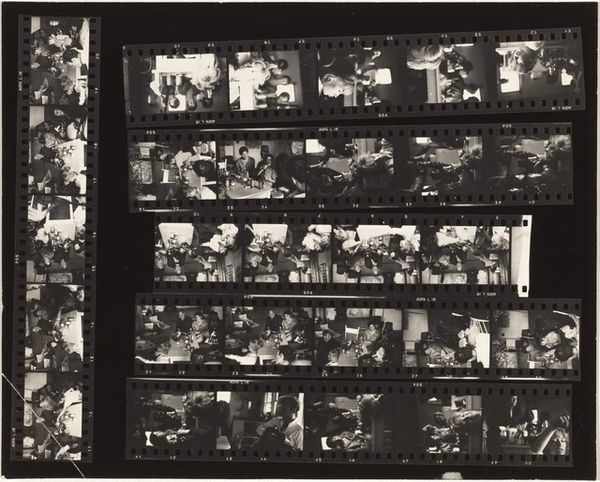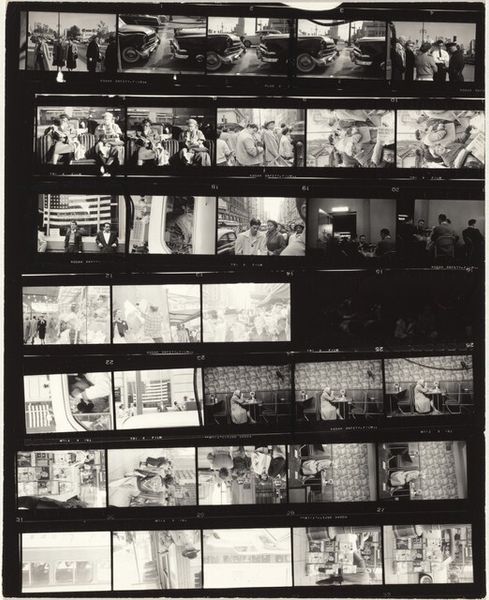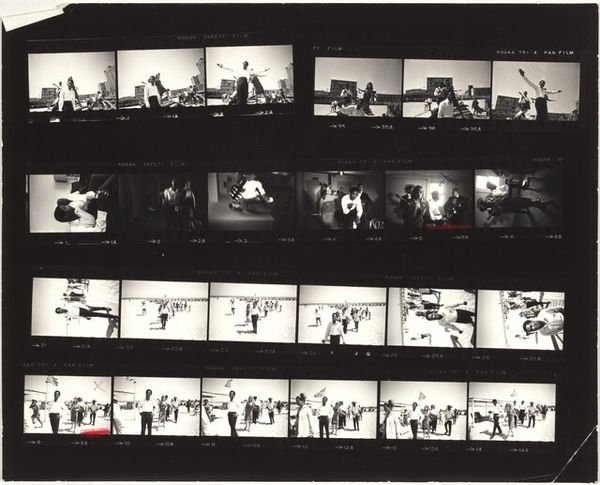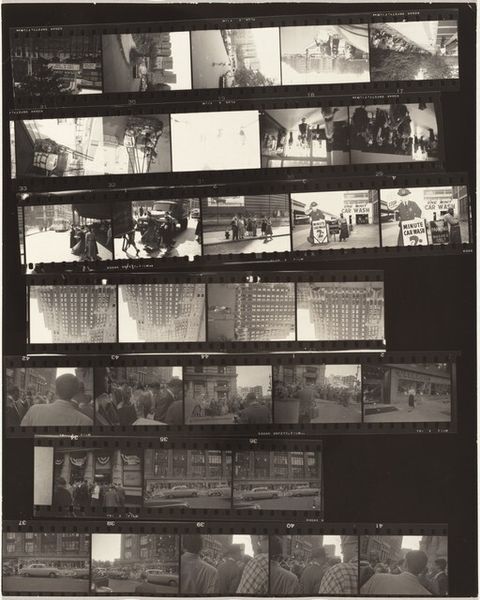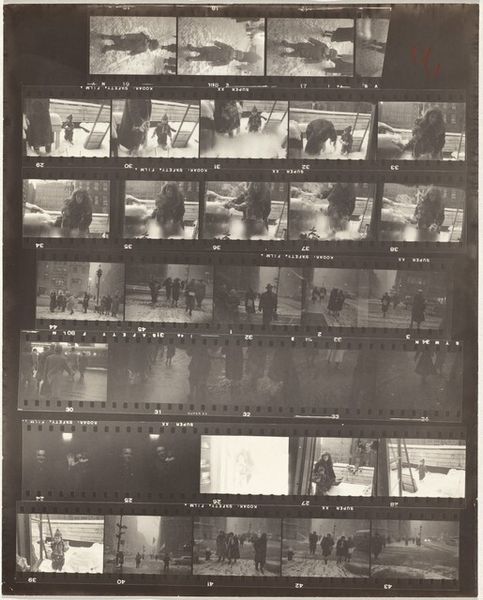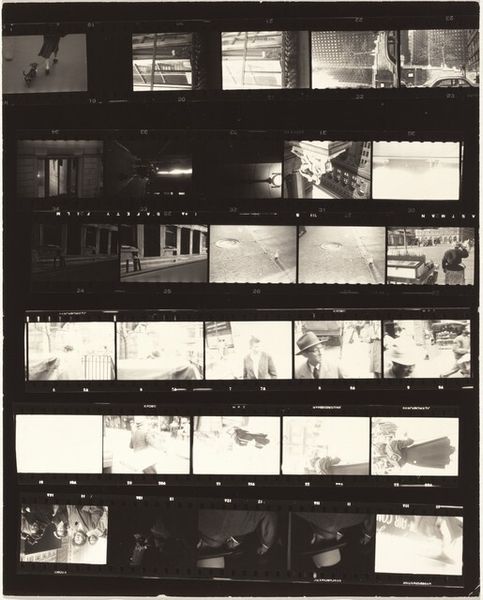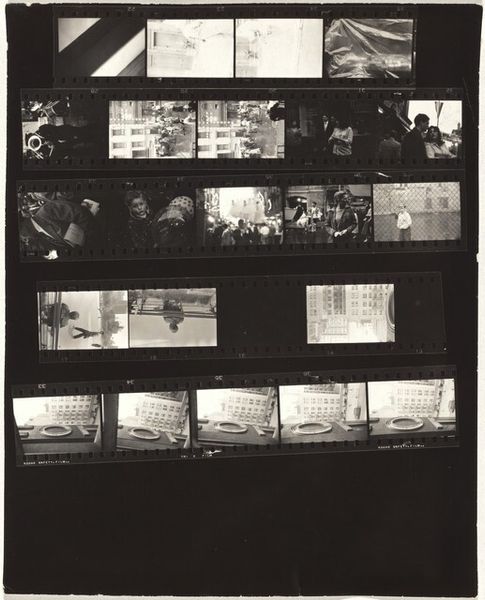
photography
#
print photography
#
landscape
#
street-photography
#
photography
#
historical photography
#
cityscape
Dimensions: overall: 20.3 x 25.3 cm (8 x 9 15/16 in.)
Copyright: National Gallery of Art: CC0 1.0
Curator: So, let’s take a look at this photographic contact sheet by Robert Frank, entitled *Early New York City 2*, from the early 1950s. It presents a fascinating glimpse into his process, before the individual images become what we know. Editor: Wow. The rawness is the first thing that hits me. It’s like peering into someone’s diary—or maybe a detective's case file. The images are so varied. I love that casual editing mark there in the corner; it's so wonderfully human. Curator: Absolutely, that blue pencil mark highlights that this wasn’t intended for display, it was very much a part of Frank's work, he was well known for capturing everyday life through an observant and sometimes critical lens, as he became more disillusioned with America. Editor: You can really sense that even from this document of documentation. It feels a world away from the polished, glossy images we associate with that era of American prosperity. There is something off-kilter that is so incredibly inviting. The composition too: are those clothes hanging in the window, in some of the shots in the frame there, so surreal to me in black and white. Curator: That's very insightful. Remember, the early 1950s were a complex time in American history—the height of postwar optimism juxtaposed with underlying social tensions. These raw images served as preliminary studies to the work Frank would present. There were constraints to overcome; he was also new to America at the time. The film would need processing and be quite expensive. He could see exactly what he shot. Editor: The sheer amount of variation is fascinating. There’s the park, the streets, maybe storefronts, all existing within the same plane of view. And it does make you think about his mental state as he was viewing this image too: What he was hoping for and why. It offers the chance to make a connection of the work and yourself. Curator: And in studying it this way, we become more acutely aware of how images and perception can be constructed. How what we choose to highlight – or in Frank's case, what was presented later on as distinct works— can alter our view of reality, or at least offer a considered one. Editor: Yes, a powerful reminder that art is a constant dialogue. This isn’t a window to the past, so much as a mirror reflecting the now. The dialogue about the past must always continue to adapt and challenge norms, I feel. Curator: Exactly. Frank’s process itself adds another layer to our experience of that history. The selection process, the intention, the limitations, the culture all captured here. Editor: This image has the incredible feeling of authenticity.
Comments
No comments
Be the first to comment and join the conversation on the ultimate creative platform.
